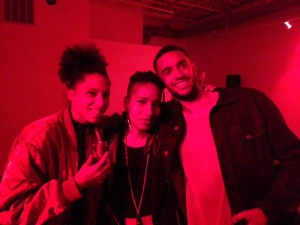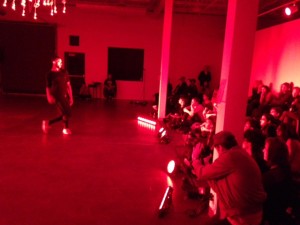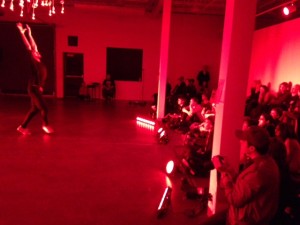“Ligia Lewis evokes the sensate and sensational by drawing attention to matters of surface. By un-sounding the gestures of singing in Sensation 1 (2011), Lewis leaves audiences with the body’s surface and all it communicates in its own right. By emphasizing hair’s animate capabilities in Sensation 2 (2012), Lewis does the same. ‘For me the surface is just as relevant as the interior,’ Lewis explains, ‘and so I’m constantly negotiating between these two spaces. I’m very interested in surface. Almost everything starts with surface. But then I really try to melt into it.’ ”
For Lewis, to melt into the surface is to explore where interior and exterior meet — this is, after all, the place of sensation. And for Lewis — who maintains an active career as a dancer — the medium of movement is central to this exploration. “In Sensation,” Lewis says, “I was interested in sensorial exploration as a physical practice, one that’s derivative of a number of movement practices I do. In using those techniques I had this realization — for myself — that what draws me to this field of work, which is different from a visual art practice, or any other practice, is that I’m absolutely interested in bodies — in what they communicate, and in embodiment — the study of embodiment.
‘What I found most interesting about dance is that it operates on a sensorial level, I guess — it’s like a feeling act.’ (…)”
(MOVEMENT, SENSATION, TEXTURE. Ligia Lewis, Tina Post for African-American Art Today, 2015)



